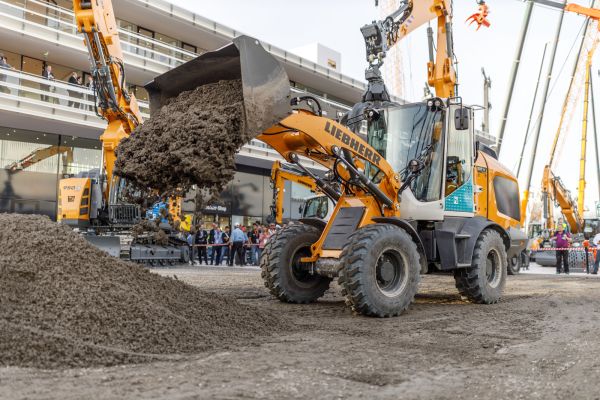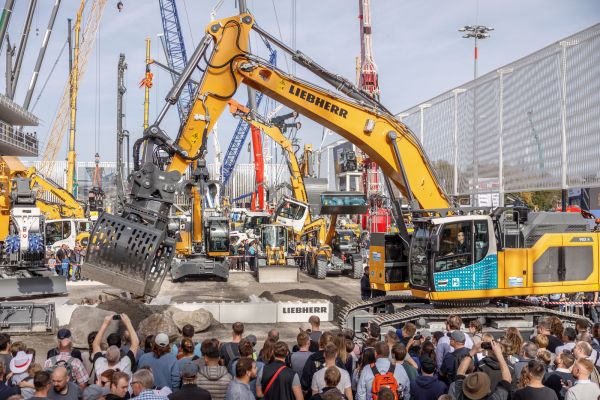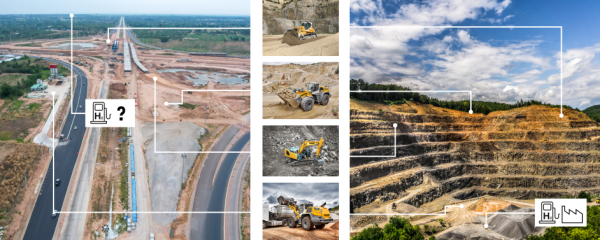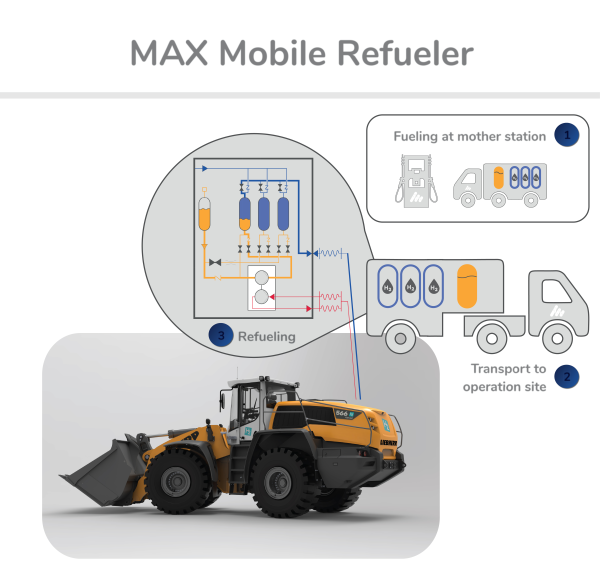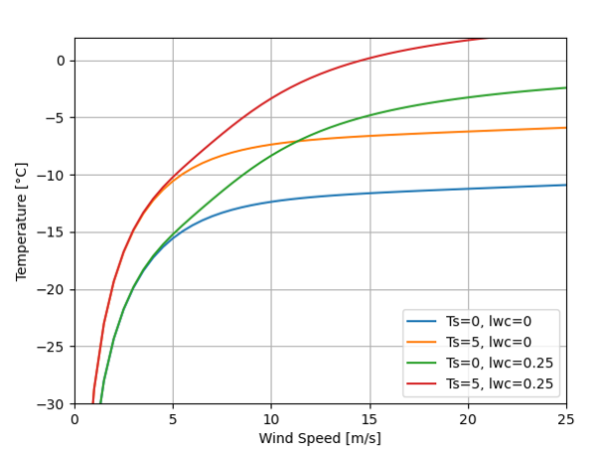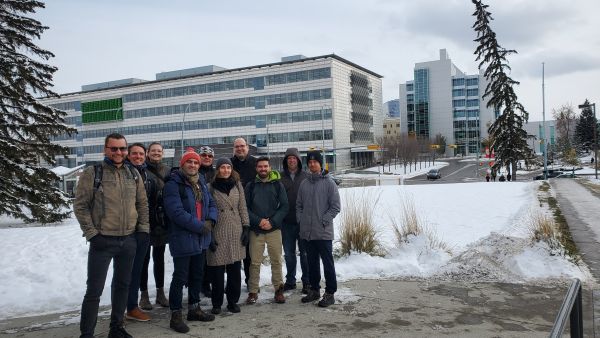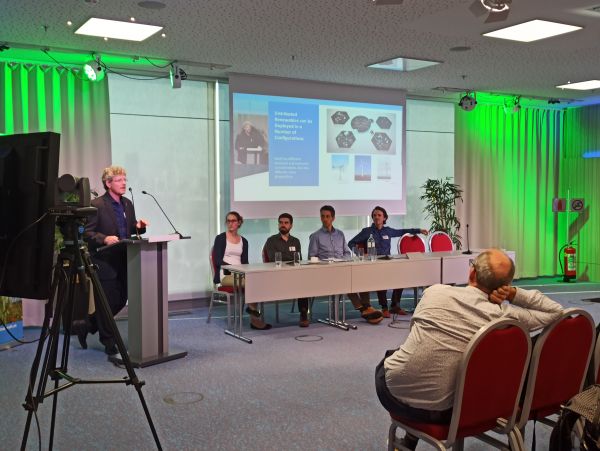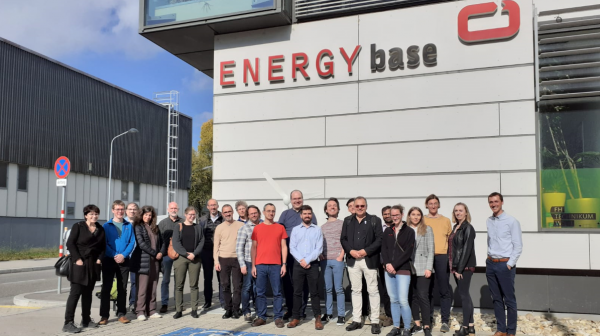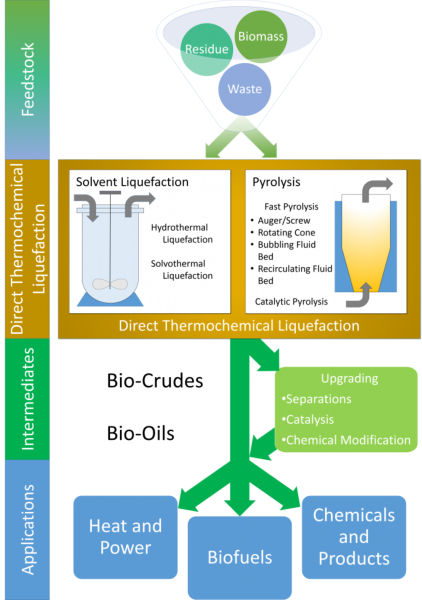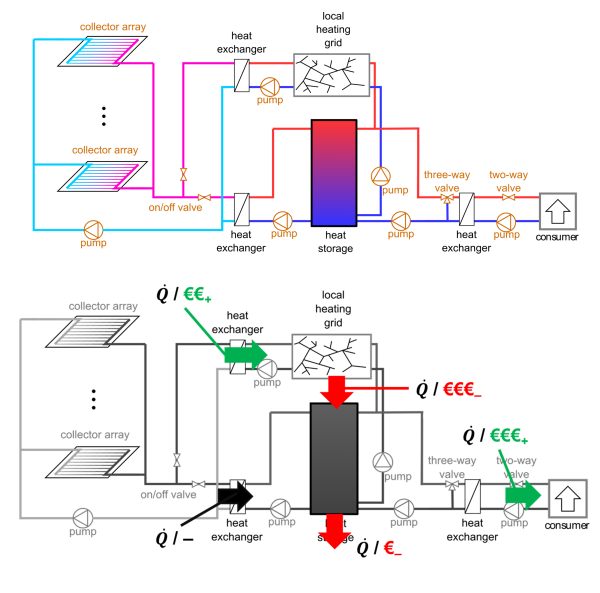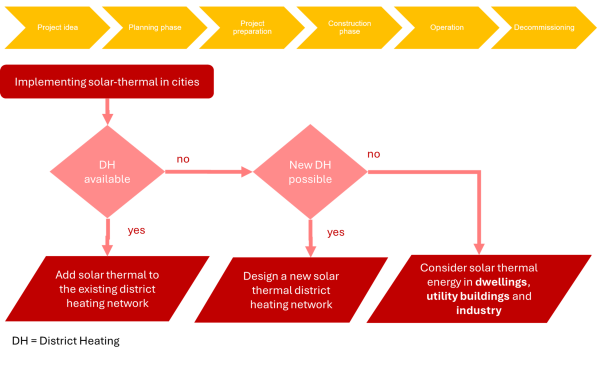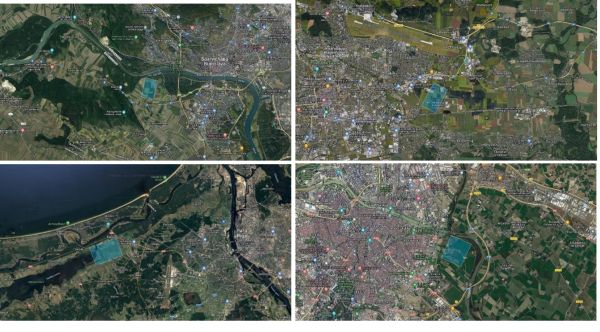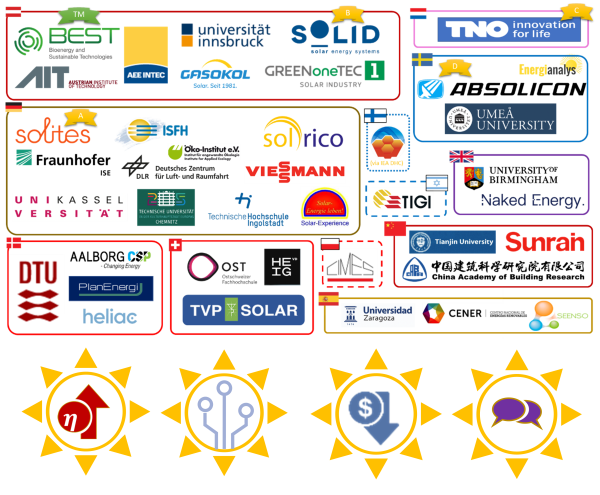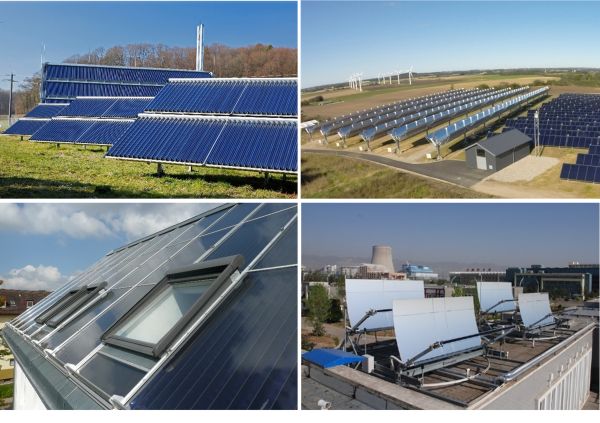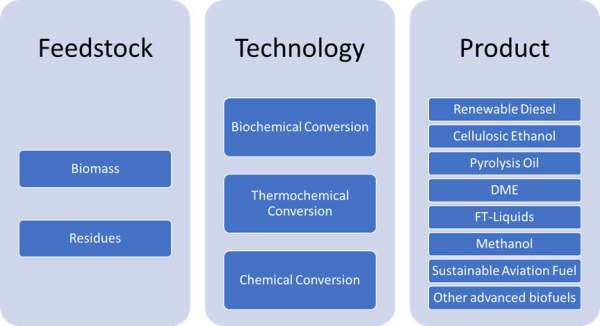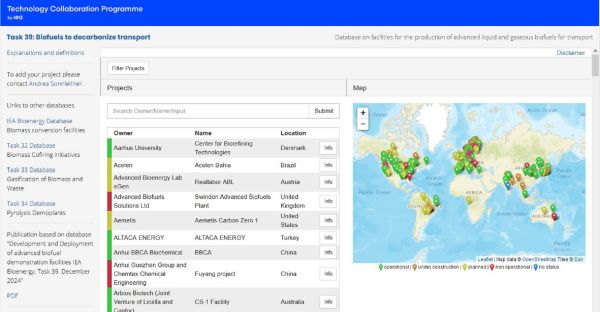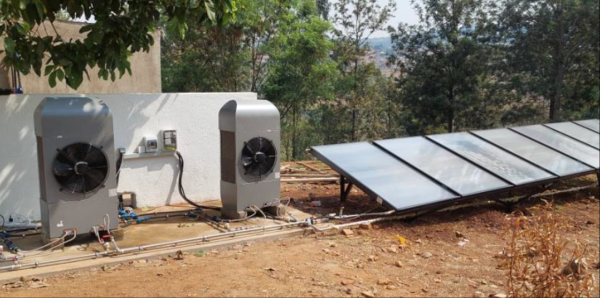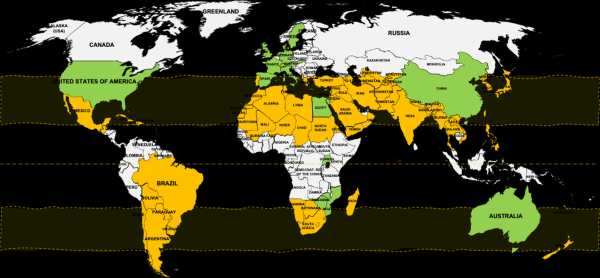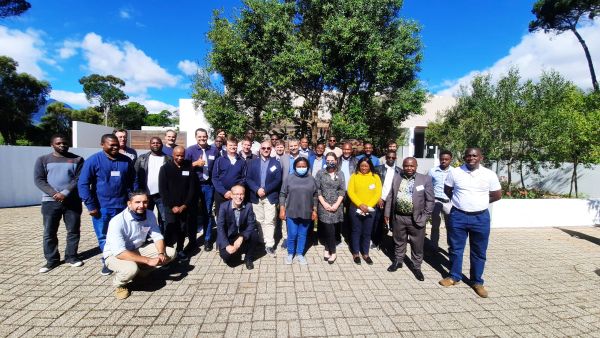Project Image Pool
There are 397 results.
Terms of use: The pictures on this site originate from the projects in the frame of the programmes City of Tomorrow, Building of Tomorrow and the IEA Research Cooperation. They may be used credited for non-commercial purposes under the Creative Commons License Attribution-NonCommercial (CC BY-NC).
Liebherr small-size wheel loader with fuel cell drive system
Presentation of wheel loader demonstrator L 507 Fuel Cell with hydrogen fuel cell at Bauma in October 2022.
Copyright: Liebherr-Werk Bischofshofen GmbH
Liebherr large-size excavator with hydorgen engine
Presentation of crawler excavator demonstrator R 9XXH with hydrogen engine at Bauma in October 2022.
Copyright: Liebherr-Werk Bischofshofen GmbH
Areas of application for highly mobile hydrogen refuelling
Areas of application for highly mobile, construction site-compatible hydrogen refuelling at locations with no or insufficient refuelling and charging infrastructure.
Copyright: Liebherr-Werk Bischofshofen GmbH
Design example for a highly mobile hydrogen refuelling station
Functionality of highly mobile hydrogen refuelling using the example of the MAX Mobile Refueler from Maximator: (1) The refuelling vehicle is refuelled at the public 700 bar truck filling station. (2) The already compressed hydrogen is brought to the machine by the transport vehicle. (3) Hydrogen is refuelled into the machine in a few minutes using a displacement principle with low energy input, whereby the highly mobile filling device is driven by the machine to be refuelled.
Copyright: Liebherr-Werk Bischofshofen GmbH / Maximator Advanced Technology GmbH
Icing on structures on the nacelle of a wind turbine
Webcam image of superstructures on the nacelle of a wind turbine with recognizable icing, which corresponds to the structure and consistency of clear ice directly on the structures and changes to hard rime as it progresses. The turbine is located at a test site of the Nergica center of applied research in eastern Canada. The webcam image is part of a dataset in the “Task 54 Icing Event Database”.
Copyright: Nergica
Modeled performance envelopes of rotor blade heating systems
Modeled performance envelopes as curves depending on wind speed and ambient temperature for different values of liquid water content (LWC) and surface temperature of the rotor blade. The curves were calculated with the “Task 54 Performance Envelope Model”.
Copyright: Patrice Roberge
Group picture of the Task meeting in Calgary
Group picture of the participants of the task meeting following the “Electricity Transformation Canada” conference in Calgary in October 2023.
Copyright: Rolv Erlend Bredesen
Task presentations at stakeholder meeting of IG Windkraft
Ian Baring-Gould (NREL, Task 41) giving a presentation on distributed wind's role in supporting the clean energy transition. Further presenters in the panel from left to right: Franziska Gerber (Meteotest, Task 54), Charles Goudreau (Nergica, Task 54), Andreas Krenn (Energiewerkstatt), Claas Rittinghaus (Energiewerkstatt, Task 54).
Copyright: IG Windkraft
Group picture of participants of Task 41, 52 and 54
Group picture of the common Task meeting and dissemination workshop of Tasks 41, 52 and 54 in Vienna.
Copyright: Alice Orell
Direct Thermochemical Liquefaction - Overview Task activities
The IEA Bioenergy Task34 addresses several levels with the focus of DTL: Feedstock, DTL technologies, intermediates technologies and potential applications of DTL products.
Copyright: Axel Funke, KIT
Solare District Heating: Structure, Heat and Revenue Streams
General structure of solar district heating (top) as well as important heat and revenue streams (bottom): The figure shows solar collectors, heat exchangers, a buffer storage, pumps, valves, the grid and consumers.
Copyright: © Dr. Viktor Unterberger / BEST GmbH
Thermal Solar Plants: Life Cycle and Planning
Stages in the solar thermal plant life cycle (top), flow chart for the decision about implementation of solar district heating (bottom)
Copyright: © IEA SHC Task 68 – Subtask C
The large-scale thermal solar plant of Silkeborg, Dk
Overview over the large-scale solar thermal plant in Silkeborg, Denmark (left) and schematic showing the different sections and piping of the installation (right)
Copyright: © Silkeborg Forsyning AB
Structure of IEA SHC Task 68
Logo board of the countries and institutions (universities, research centres and companies) that participate in IEA SHC Task 68. The Task Management (TM) and the Subtask leads (A to D) are highlighted. Below, the key topics of IEA SHC Task 68 are shown: Higher efficiency (Subtask A), digital solutions (Subtask B), lowering costs (Subtask C) and dissemination / communication (Subtask D)
Copyright: © das IEA SHC Task 68 Konsortium
Examples for modern solar thermal collectors
Ground mounted evacuated tube collectors in Büsingen, Germany; combination of flat plate collectors and parabolic trough collectors in Taars, Denmark; roof integrated solar thermal collectors on “solar@home” building in Crailsheim, Germany; demo system of Sun Oyster on a flat roof in Zhangjiakou, China
Copyright: © Solites, Aalborg CSP und sunoyster.com
Advanced Biofuel Pathways
Principle pathways of advanced biofuels technologies
Copyright: @BEST
Demoplants Database
Database on facilities for the production of advanced liquid and gaseous biofuels for transport
Copyright: @IEA Bioenergy Task 39 @Open Street Map
PURIX Solar Cooling System
PURIX provides sustainable cooling technologies, leveraging R718 (water), a natural, non-flammable refrigerant, to develop environmentally friendly air conditioning and cooling systems.
Copyright: PURIX
Sunbelt regions
Sunbelt countries (orange) and IEA SHC Task 65 participants (green)
Copyright: Neyer Brainworks GmbH / Dr Jakob Energyresearch GmbH
Task65 - Solar Akademie - SACREEE
The IEA SHC Solar Academy and SOLTRAIN (Southern African Solar Thermal Training and Demonstration Initiative) hosted with the support of SACREEE and SANEDI a specialized course for professionals on Solar Cooling for Sunbelt Regions at Stellenbosch Institute for Advanced Study in South Africa. A total of 46 participants from 7 countries took part, with around 8 of them participating virtually. https://task65.iea-shc.org/Data/Sites/1/publications/IEA-SHC-Solar-Update--Solar-Academy-SACREEE.pdf

